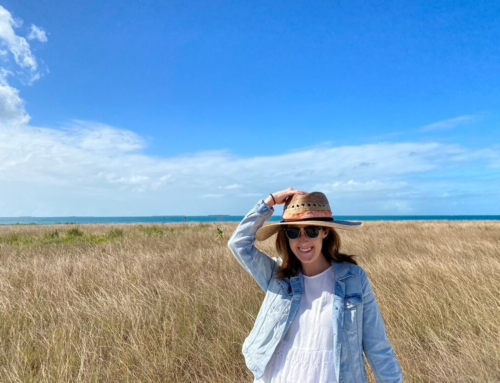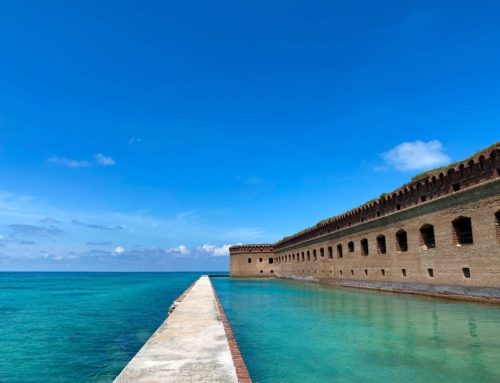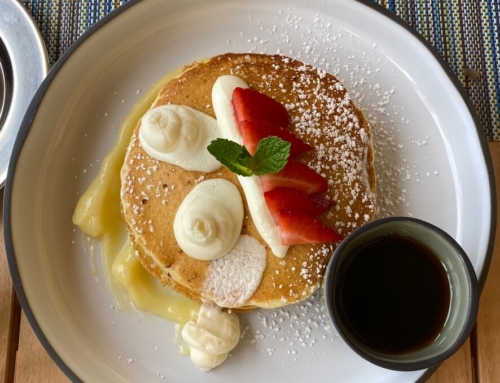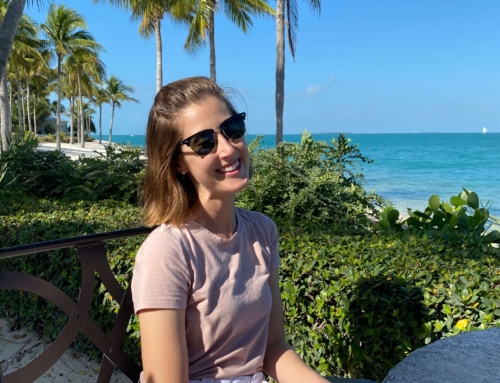I LOVE Berlin. It’s one of my favorite cities in the world. What I love most about Berlin is its refusal to downplay or ignore its tragic history. (I wish the U.S. was more like this). Evidence of Berlin’s past is everywhere, and these reminders keep people vigilant in their everyday pursuit of justice.
If you have limited time in Berlin, these are the 8 most iconic things to do:
See the Berlin Wall

Originally the Berlin Wall, now the East Side Gallery
Remains of the Berlin Wall can be found next to the Topography of Terror Museum in Berlin’s Mitte neighborhood. The city also constructed a brick trail to show where the wall once stood. You can see the perimeter of the Wall’s original location using this interactive map.
Visit the Topography of Terror Museum
The Topography of Terror Museum is located at the site of the former Secret State Police. The museum is free and very informative. There are guided tours or you can explore on your own. You can see photos of propaganda and read powerful stories about people who risked their lives to rebel against the regime. There are also stories about the people who were coerced into enforcing the power imbalance. I highly recommend this museum.
You MUST check out the East Side Gallery

‘My God, Help Me to Survive This Deadly Love’
This one’s a non-negotiable. If you visit Berlin and don’t see the East Side Gallery, you didn’t really visit Berlin.
During the Cold War, the Western (Allied) side of the Berlin Wall was covered in graffiti and the Eastern (Axis) side of the Wall was bare. The Eastern side of the Wall was inaccessible because of its ‘death strip.’ The death strip consisted of glass, barbed wire, and land mines that lined the wall. The death strip was created to prevent people from trying to escape into West Berlin. Several guards died by accidentally stepping on concealed land mines.
Today the Eastern side of the Berlin Wall has been transformed into an art exhibition called the East Side Gallery. There are several iconic murals on the Wall including ‘My God, Help Me to Survive This Deadly Love.’
Experience the Memorial to the Murdered Jews of Europe
The Memorial to the Murdered Jews of Europe, also known as the Holocaust Memorial, is the most powerful memorial I’ve ever seen. The atmosphere is ominous and could send a shiver down your spine even on a hot summer’s day. The architect designed the memorial to evoke strong feelings of fear and despair. As you walk further into the memorial, the pillars surrounding you get taller and taller. You feel trapped, lost, and afraid. I recommend exploring solo so you can really immerse yourself in the memorial without any distractions.
Watch sunset at the Reichstag Building

Inside the Reichstag at sunset
The Reichstag Building houses the German parliament. Visitors can look down through the glass roof into the politicians’ boardroom. The glass ceiling was created after WWII to symbolize transparency in government and to remind government officials of who they are meant to serve. Can you see why I’m obsessed with Berlin?
Entrance to the Reichstag is FREE. All you need is a reservation. I recommend choosing the last reservation time available so that you can watch the city glow during golden hour. Don’t forget to show up early to your reservation. When I visited, there was a long line to get through security.
Take a picture of the famous Brandenburg Gate

The Brandenburg Gate at night
The Brandenburg Gate is arguably the most iconic sight in Berlin. Crowds celebrated here for days after the Berlin Wall fell. People brought hammers to this square and took out years of frustration on the Wall. The Brandenburg Gate used to divide the city, but now it symbolizes a united Berlin.
See Checkpoint Charlie
Checkpoint Charlie is an iconic landmark in Berlin. For 28 years, it was one of few points of entry to East Berlin. Today there is a double-sided sign here which depicts a Soviet troop facing West and an American soldier facing East. My interpretation of the sign is that it symbolizes world powers enforcing checks and balances on each other to prevent future carnage.
Go on a Walking Tour
A walking tour is a great way to see all of the city’s most iconic sights in just a few hours and learn a tremendous amount of history while doing so. I recommend going on a walking tour on your first day in Berlin so that you can get a lay of the land and check out places that your guide recommends during the remainder of your stay.
If you have time to do more, that’s great! Here are 14 more things to do in Berlin:
Stroll through the Tiergarten
The Tiergarten is a massive green space right in the middle of the city. It’s scenic and perfect if you wish to take a break from the hustle and bustle of the city center.
Explore the Jewish Museum

The Jewish Museum
The Jewish Museum is my favorite museum in Berlin. The walls and floors are slightly angled in a purposeful attempt to disorient visitors. The slopes are gradual so that you don’t even notice them until you start to feel dizzy. The architect’s aim was to make guests feel anxious and uncomfortable, just like the people of Berlin felt at the onset of WWII. The museum also has a garden which is designed to disorient people. I visited in the late afternoon during winter so it was already dark out. In the dark, I walked through the sloped garden and in between its tall pillars until I began to feel nauseous. I had to go back inside and sit down to overcome the nausea. That’s how powerful this museum is.
Visit Charlottenburg Palace

Outside the Charlottenburg Palace
Charlottenburg Palace was built to be a summer residence for Frederick III, the first King of Prussia, and his wife. The palace has beautiful grounds which are free and open to the public.
Experience Berlin’s World-Famous Nightlife
Berlin’s nightlife is arguably the best in the world. I hardly ever go clubbing in the States, but I visited the Kit Kat Club in Berlin to get the full Berliner experience. Kit Kat is a nude techno club and club-goers are expected to check their clothes and cell phones at the door. Visitors can expect to wait at least an hour to get into the club.
Seeing strangers dancing in the nude was shocking at first, but I personally never felt unsafe. It’s definitely not for everyone, but I’m glad I went and had a once in a lifetime experience.
Sample Currywurst

I can smell this photo.
Currywurst is a German sausage seasoned with curry powder. It can be served in a bun or over a bed of French fries. Locals enjoy their currywurst with a hearty dollop of curry ketchup.
I tried currywurst at Curry 36 in Kreuzberg. I found the smell of the curry ketchup to be completely unappetizing and downright foul, but I missed it the day I left Berlin.
Sample a Kebab
Kebab is a much-loved fast food in Berlin. Turkish immigrants first brought the kebab to Berlin and now it’s sold on every street corner. Similar to a Greek gyro, a kebab is a sandwich of grilled meat, diced tomato and onion, and lettuce. Kebab is typically served on pita bread or in a wrap. It’s easily customizable, and customers can choose their meat, garnishes, and amount of garlic aioli and spicy sauce. (I like a lot of the garlic aioli and just a hint of the spicy dressing).
You can find out which restaurants serve the best kebabs here.
Explore Kreuzberg
Many locals live in Kreuzberg, which is just beyond the historic sights of the bustling city center. I recommend strolling around the neighborhood to learn more about the local lifestyle. Kreuzberg has a great selection of thrift stores, murals, and restaurants.

Kreuzberg

Kreuzberg
See the Ampelmannchen
Ampelmannchen translates to ‘traffic light man.’ The ampelmannchen can be found on the flashing walk signs in East Berlin. In West Berlin, the walk signs are identical to the ones in the United States. The ampelmannchen was designed by psychologist Karl Peglau. He purposely made the ampelmannchen cute because people are more likely to follow rules if the person setting them is likeable or easy on the eyes.
You can read more about the history of the ampelmannchen here.
See the Kaiser Wilhelm Memorial Church
The Kaiser Wilhelm Memorial Church was bombed and damaged during a WWII air raid, but the Berlin government made a conscious decision to leave the church’s roof in ruin as a reminder to all of what the city has been through.
Go to a German Biergarten
Is there anything better than enjoying a cold beer in a pretty garden on a warm summer’s day?
I visited Berlin in the winter so most beer gardens were closed, but the Hofbrau Wirtshaus (beer hall) was open for indoor dining. I went with a friend and we danced, drank huge pitchers of beer, listened to German folk music, and chatted with friendly locals. It was definitely touristy, but we had a great time!
See the Memorial for the Victims of Nazi Euthanasia
During WWII, the Nazi regime killed 70,000 people who had developmental disabilities. There is a memorial to honor these victims near Potsdamer Platz, on the edge of the Tiergarten.
See the Platform 17 Memorial
The Platform 17 Memorial can be found outside of the Berlin-Grunewald railway station. During WWII, 50,000 Jewish people passed through this station on their way to labor camps. Most never returned. Today the train station is still functional and there is a memorial for those who died after passing through this station.
Learn about Stumbling Stones
Stumbling stones are gold plaques that you will find all over the sidewalks of Berlin. They were created to pay respects to Jews who were kidnapped from their homes and killed during the Holocaust. Stumbling stones are placed outside of the victims’ last known addresses.
Go on a Day Trip to Teufelsberg
Visiting Teufelsberg was one of the highlights of my time in Berlin. Teufelsberg is definitely off the typical tourist path and some Berliners I spoke to had never heard of it. Teufelsberg is a large man-made hill on the outskirts of Berlin. It was created from the trash and debris of WWII. During the Cold War, American soldiers built a listening station on top of this hill so that they could spy on the Germans.
Today the structure is abandoned and has been covered in graffiti and murals. When I visited, there was a man at the entrance (presumably living there) collecting an unofficial entrance fee from visitors. I thought that was so random and hilarious! He created a job for himself (charing people to enter a somewhat public space) so that he could afford to work on his art. You’ve got to give him props for creativity. I paid him my entrance fee and signed his collaborative art piece. I really enjoyed exploring this unique area and would definitely recommend visiting if you’re interested in something a little more adventurous than your average day of sightseeing.

Teufelsberg

Scenic walk to Teufelsberg
Have you been to Berlin? What were your favorite things to do? Let me know in the comments!
– Travel Alli






Ever since I had a chance to visit Munich I’ve been thinking about going back to Germany. I would love to see its biggest cities, beautiful national parks and stunning mountain peaks. Sadly we are not allowed to travel anywhere. Can’t wait for things to go back to normal. Thanks for sharing and stay safe 😊 Aiva
Thank you for your comment! I loved Bohemian Switzerland National Park, which is just outside Dresden and accessible by public transportation. I will write a post about it tomorrow. I will also write about Frankfurt, Cologne, and Heidelberg. Thank you for reading my Berlin post. I hope we can all travel again very soon! 🙂
You are too cute xoxo Berlin 💗🌍
[…] Previous Next Top 8 Things to Do in Dresden, Germany […]